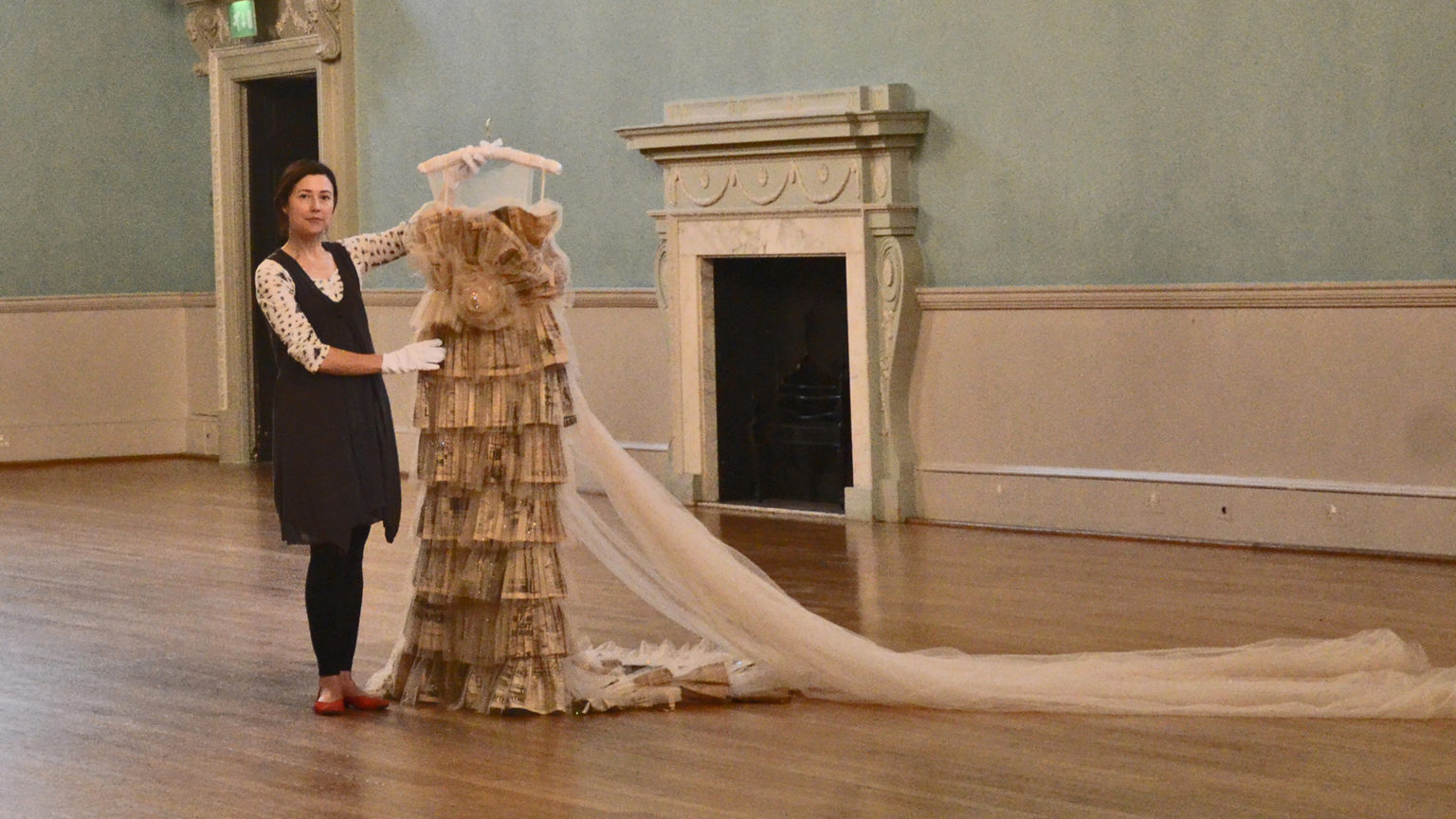0%

The You Choose exhibition was co-curated by local school children and the Fashion Museum. Photo: Fashion Museum Bath
LONDON: Pioneer Sustainable Fashion Designer Sanyukta Shrestha’s sustainable couture dress has been chosen as one of the 10 curated unique displays at ‘You Choose’ exhibition in Fashion Museum Bath, UK, until October 30, 2022.
Shrestha’s work is being showcased alongside those of designer Kenzo, Ossie Clark, Junya Watanabe, Jean Paul Gaultier and Gareth Pugh, as well as historic treasures, including a 1750s man’s worsted wool banyan, an 1881 beetle wing embroidered day dress and 1940s women’s cape.

Amongst over 100,000 historic objects in the Fashion Museum collection ranging from Shakespeare era to today’s leading designers (Christian Dior, Vivian Westwood and Alexander McQueen), Shrestha is the first designer of Nepali origin to be documented in the history of The Fashion Museum in 2012 and the only item identified as made in Nepal till date.
The historic moment for Nepal, making it the first Nepali woman to be documented in world fashion history.
“To receive this honor from one of the greatest Museums in the world has been a real pinch myself moment. This historic moment has made me feel speechless and ecstatic,” says Shrestha.

Recognized by the media as “the dawn of the sustainable movement” and “the Greta of the Wedding World”, Shrestha’s sustainable wedding gown; handcrafted from 40 years old newspapers found the under floorboards from the 1981 to 1982 aided by Nepalese hand-loomed organic cotton and 3,000 Swarovski crystals took nearly two months to finish in 2011.
Whether we call this ‘trash to Treasure’ or ‘Ordinary to Extraordinary’, 10 years since the gown has been preserved in the Fashion Museum, it has served as part of educational and environmental study.

This time, it has not just been the interest of fashion enthusiasts, historians and environmental activists but caught the core interest of junior school children who choose the Sanyukta Shrestha Couture ‘Pippa gown’ for its unique beauty of sustainable credentials and co-curated with Museum for ‘You Choose’ Exhibition.
Shrestha’s vision of sustainable fashion has truly touched its purpose to inspire future generations. The children who chose this sustainable dress inspires us to educate ourselves about not only the past at the museum but also the future – ‘a future in which people and nature thrive together’.
The exhibition curator Fleur Johnson said: “We are thrilled that children from Oldfield Park Junior School in Bath have chosen Sanyukta Shrestha’s Pippa gown as their pick for the You Choose exhibition. The story of Sanyukta discovering the newspapers under the floorboards of her home and upcycling them into an elegant wedding gown resonates with current concerns around the sustainability of the fashion industry. The Pippa wedding gown has decades of stories literally printed into its folds and pleats and is a timeless example of how designers are finding creative new ways to source and use materials to create more ethical and eco-friendly clothing.”
Our planet faces the interconnected crises of rapid climate change and biodiversity loss. We have no time to address these existential threats as the fashion industry is the second most polluting industry in the world.
Sanyukta’s Pippa gown, a great example of slow and circular fashion that educates us to simply appreciate things around us and to move beyond a philosophy of single use. Any raw materials or even trash can will be recovered, recycled or upcycled if we think consciously. ‘We need to trash the throwaway culture not the trash itself’, Sanyukta adds.